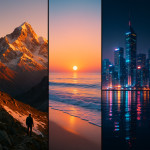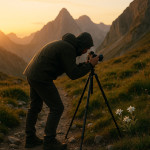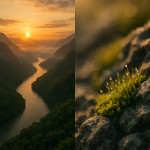Seasonal shoot planning: secure coveted landscape locations before demand peaks
Every year, thousands of photographers race to reserve dramatic viewpoints and pristine parks just as nature reaches its most photogenic moments. With smart seasonal shoot planning, you can secure landscape locations months before demand explodes, lock in ideal light and permits, and keep your budget intact. Follow this step-by-step guide to stay ahead of the crowd.
Why seasons dictate both demand and visual impact
Landscape imagery lives and dies by two variables: natural light and environmental character. Spring blossoms, summer sunsets, vivid autumn foliage, or winter's minimalism each trigger distinct client requests and spike the number of photographers applying for the same permits.
- Spring (March–May) – floral colours, soft light, high commercial demand for lifestyle campaigns.
- Summer (June–August) – long golden hours and warm tourism messaging; highest visitor congestion.
- Autumn (September–November) – saturated reds and yellows perfect for editorial work; short booking windows.
- Winter (December–February) – crisp air and low sun angles; permits are faster but weather risk rises.
Mapping demand peaks with real booking data
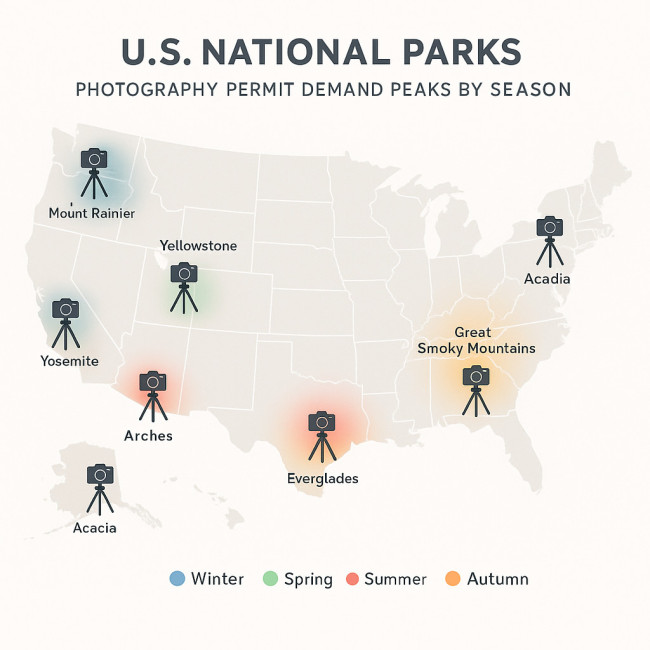
Reservation platforms such as Recreation.gov and ShotHotspot show a clear jump in location holds 30–60 days before each season's colour change. According to the National Park Service, summer photography permits average 60 days lead time, while winter requests clear in under three weeks. The SVG below visualises this disparity.
Source : National Park Service
Calculate your ideal booking window
Use the formula below to pick a safe reservation date:
Desired shoot date – Average permit lead time – Buffer (2 weeks) = Latest safe application date
Example: You want fiery fall foliage on 20 October. Subtract 40 days (average) and two extra weeks. Apply by 30 August to avoid last-minute rejections.
Permit and logistics tracker
| Season | Lead-time (days) | Typical fee (USD) | Weather fallback rate |
|---|---|---|---|
| Spring | 45 | $150–300 | 20 % |
| Summer | 60 | $200–400 | 15 % |
| Autumn | 40 | $150–350 | 25 % |
| Winter | 20 | $100–250 | 35 % |
Six tactics to lock locations before rivals do
- Monitor social chatter. Hashtags such as #fallcolors reveal when foliage starts turning. Once posts climb, expect permit queues to follow.
- Automate sun-path alerts. Pair PhotoPills with Google Calendar so sunrise azimuth changes trigger email reminders for each chosen viewpoint.
- Batch scout days. Combine professional site-scouting techniques with drone fly-overs to pre-approve multiple angles in one trip.
- Secure ethical access. Review the responsible imagery code of ethics and include restoration clauses in your application to stand out.
- Back-up with weather data. The weather-intelligent scheduling method gives clients confidence and accelerates sign-off.
- Offer aerial alternatives. If ground slots fill, a quick shift to drone coverage – see drone vs. ground cameras comparison – can save the concept.
Optimize portfolios for location-specific searches
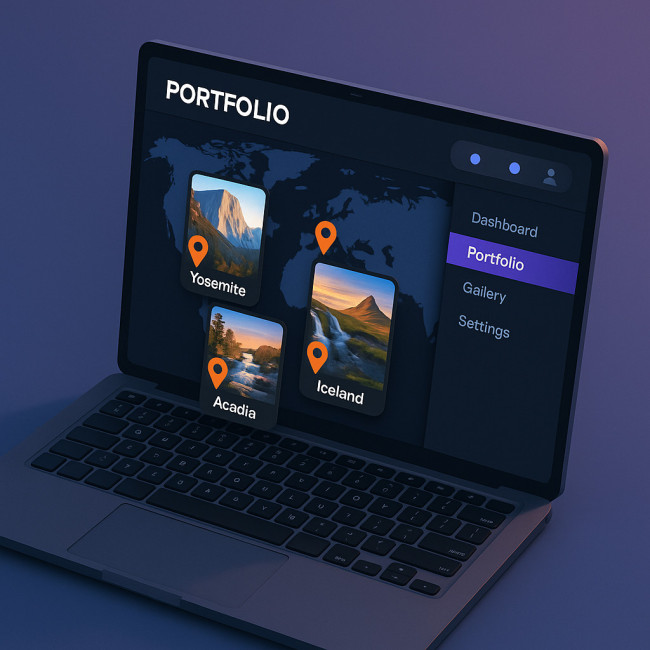
Once you confirm dates, update galleries with geotags so agencies hunting for “Yosemite spring mist” find you. Our guide on geo-tagged portfolios explains metadata that lifts rankings. For further reach, list your upcoming projects on the dedicated landscape photographer directory visited by producers planning six months ahead.
Case study: Beating the autumn rush at Acadia National Park
Freelancer Maya Chen secured three sunrise spots at Acadia's Cadillac Mountain by applying on 1 July—over 90 days early. She bundled permits with a refundable lodge booking, tracked cloud cover through NOAA, and delivered an on-brand series while 70 % of applicants were still wait-listed.
Quick self-audit checklist
- Have I marked permit release dates in my calendar?
- Did I draft a plan B within 50 km of the primary site?
- Are my batteries and ND filters winter-ready in case of late snow?
- Is client messaging aligned with ethical guidelines on terrain protection?
Landscape shoot planning quiz
FAQ
- Do I always need a permit for commercial landscape shoots?
- In the United States and many EU parks, any project involving paid talent, crew, or equipment beyond a handheld camera requires a special use permit.
- How do I budget for weather delays?
- Add 20–30 % contingency to accommodation and crew fees. Confirm flexible cancellation policies before payments.
- Is drone coverage a viable fallback for closed trails?
- Yes, provided you hold a Part 107 licence (US) or equivalent and secure separate airspace clearance.
Take action now
Peak seasons wait for no one. Open your calendar, note permit release windows, and pitch concepts early while prime landscape locations are still available. Need a complete checklist? Download our free seasonal planner and never miss another golden hour.
